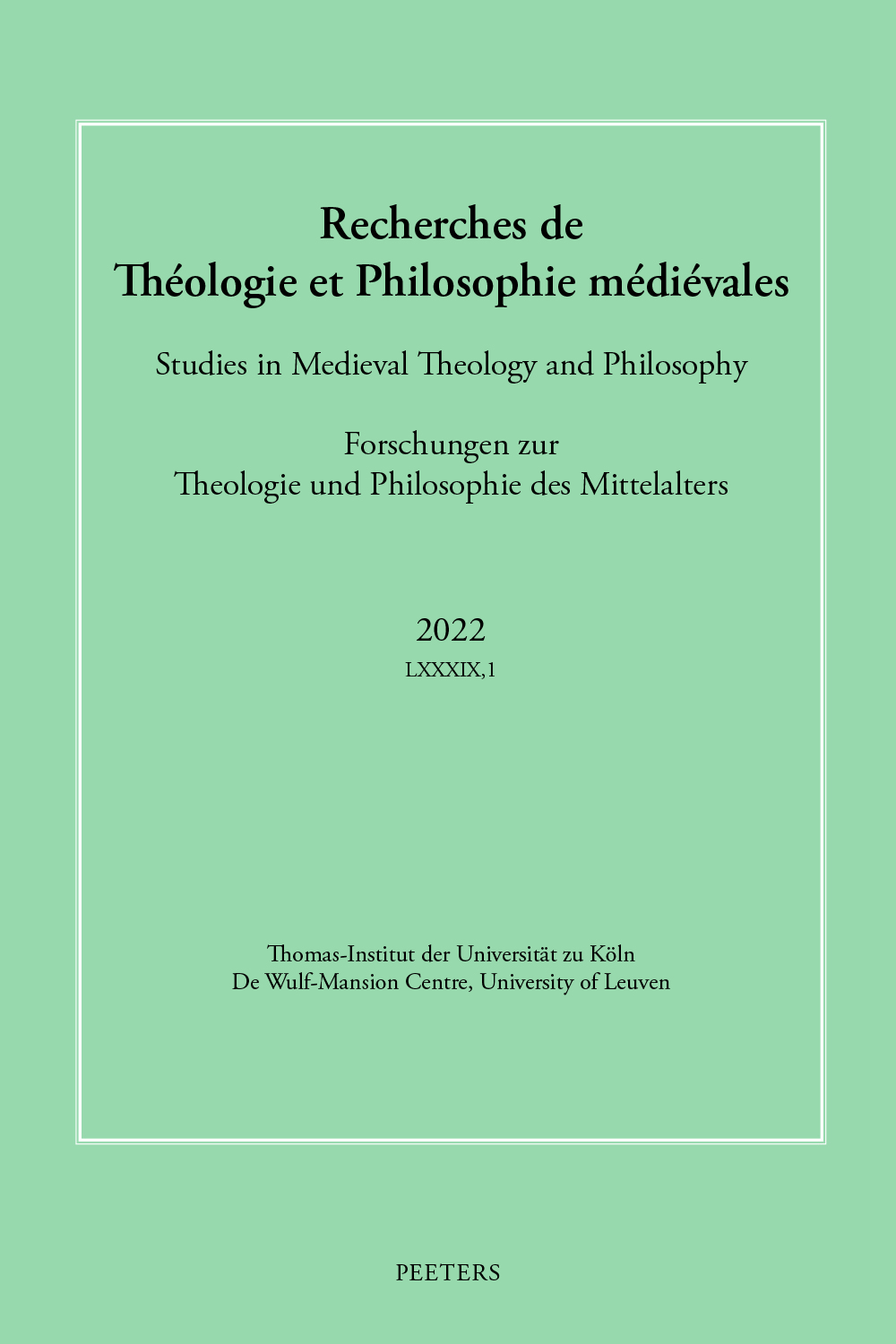 previous article in this issue previous article in this issue | next article in this issue  |

Preview first page |
Document Details : Title: «Decor ex praesentia mali» Subtitle: Aesthetic Explanation of Evil in Thirteenth-Century Franciscan Thought Author(s): BYCHKOV, Oleg V. Journal: Recherches de Théologie et Philosophie Médiévales Volume: 68 Issue: 2 Date: 2001 Pages: 245-269 DOI: 10.2143/RTPM.68.2.953 Abstract : One of the important theological issues for ancient and medieval thought was to account for the existence of evil. Augustine provided an aesthetic explanation: evil exists for contrast, to let the good stand out more prominently. Thus, just as a painting that uses both dark and bright colors, the universe that contains both good and evil is beautiful as a whole. The argument was debated in the twelfth and thirteenth centuries. Alexander of Hales, as well as the Franciscan tradition in general, strongly supported the Augustinian position. The article discusses a previously unknown debate between Albert the Great and Bonaventure about this issue and suggests that Bonaventure is defending his fellow-Franciscan Alexander. |
|


